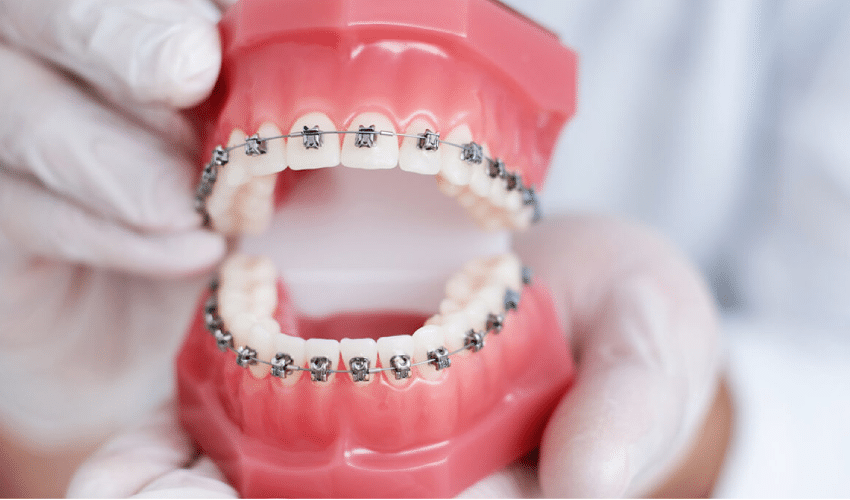When it comes to dental care for kids, one of the most common questions parents have is: What is the best age for teeth braces? As early intervention becomes more common, understanding the right time for braces can be tricky. In this article, we’ll explore whether early bracing is safe for kids, delve into the process, benefits, and post-treatment care, and answer some of the most pressing concerns that parents have when considering braces for their children.
What is the Best Age for Teeth Braces?
Before diving into early bracing, let’s first answer the big question: What is the best age for teeth braces? Traditionally, braces are applied when a child is between 10 and 14 years old, once most of their permanent teeth have emerged. However, recent trends have seen orthodontists recommending treatment as early as age 7 in some cases.
Early intervention can be beneficial in certain situations where a child’s bite or jaw alignment needs correction before the permanent teeth come in. The goal is to address problems that could lead to more complex issues later on, potentially reducing the time spent in braces later.
The Importance of Early Bracing
Early braces, also known as Phase 1 treatment, are typically recommended for children between the ages of 6 and 10. But is it safe for kids? The short answer is yes, provided it’s done under the supervision of an experienced orthodontist. Early intervention helps with:
-
Correcting Bite Issues: Early bracing can address overbites, underbites, and crossbites, which, if left untreated, could worsen over time.
-
Creating Space for Permanent Teeth: Some children may not have enough space in their mouths for their adult teeth. Early braces can help guide the permanent teeth into the correct positions.
-
Reducing the Need for Future Treatment: In some cases, early intervention can reduce the complexity of later treatments, potentially shortening the overall time spent in braces.
Signs Your Child May Need Early Bracing
It’s essential to be on the lookout for signs that your child might need early braces. While only an orthodontist can provide a diagnosis, here are a few indicators:
-
Crowded Teeth: If your child’s teeth are crowded, it could be a sign that there isn’t enough space in their mouth for their adult teeth.
-
Protruding Teeth: If your child’s upper or lower teeth stick out excessively, braces might help realign their teeth for better functionality and appearance.
-
Difficulty Chewing or Biting: If your child struggles with biting or chewing food properly, it could indicate a bite problem that may require orthodontic treatment.
-
Speech Difficulties: Some speech issues, such as a lisp, can stem from alignment problems in the teeth or jaw.
How Do Braces Work for Kids?
When early intervention is necessary, orthodontic braces typically work by gently guiding the growth of the jaw and teeth. In most cases, the process involves using appliances like expanders, partial braces, or retainers to reshape the mouth and encourage proper alignment.
-
Phase 1 Treatment: This phase focuses on correcting any major alignment issues and preparing the teeth and jaw for the permanent teeth that will come in. Treatments can include the use of a palate expander, which widens the upper jaw, or other appliances to guide the development of teeth.
-
Monitoring Growth: After the initial treatment phase, the orthodontist will monitor the growth and development of the child’s teeth, usually with regular checkups. Depending on the progress, the orthodontist may recommend waiting until the child has more permanent teeth before starting Phase 2 treatment.
-
Phase 2 Treatment: This typically begins when the child’s permanent teeth are in place. Phase 2 often involves traditional braces to refine alignment and finish the correction process.
Benefits of Early Braces for Kids
There are several reasons why early braces might be beneficial for kids. Here’s a closer look at the advantages:
-
Prevents Future Complications: Early intervention can correct issues before they develop into bigger problems, reducing the need for more complex treatments later.
-
Promotes Proper Jaw Development: Early braces can help guide the development of the jaw, improving bite and alignment.
-
Improves Self-Esteem: Crooked teeth or bite issues can affect a child’s self-confidence. Early braces may boost their self-esteem by improving their appearance.
-
Shorter Treatment Time Later: In some cases, early bracing can reduce the time required for braces during adolescence, making it a long-term time-saver.
Are There Risks Associated with Early Bracing?
While there are many benefits, parents may also have concerns about the safety and effectiveness of early bracing. Here are a few things to consider:
-
Unfinished Growth: A child’s mouth and jaw are still developing at an early age. Early braces may need to be adjusted as the child grows.
-
Possible Discomfort: Like any orthodontic treatment, braces can cause discomfort, especially in the initial stages. However, this is usually temporary.
-
Not Always Necessary: Not all kids need early braces. An orthodontist will evaluate whether early intervention is appropriate for your child’s specific needs.
Post-Treatment Care for Kids with Braces
After your child’s braces are removed, post-treatment care is essential to ensure that the teeth stay in their new positions. This typically involves wearing a retainer. A retainer will help maintain the alignment achieved during the braces phase and prevent teeth from shifting back to their original positions.
It’s important to follow the orthodontist’s instructions regarding when and how often your child should wear the retainer. Regular dental checkups will also help monitor their progress and ensure that the teeth remain in good alignment.
Final Thoughts: Is Early Bracing Safe for Kids?
In conclusion, early bracing can be a safe and effective way to address orthodontic issues in children, provided it’s done under the guidance of a skilled orthodontist. By considering factors such as the child’s age, development, and specific dental concerns, early intervention can help prevent more severe issues down the road. So, if you’re wondering what is the best age for teeth braces, the answer will depend on your child’s unique situation. Early braces may offer significant benefits when applied at the right time, helping your child achieve a healthy, beautiful smile with fewer complications in the future.



![[**Official™︎ Coinbase Toll Free number @@] How to Contact Coinbase Support: Phone, Chat, and Email Explained](https://bioneerslive.org/wp-content/uploads/2025/05/conbase-tfn-1820-400-8909-usaxKlNu7K-270x162.png)